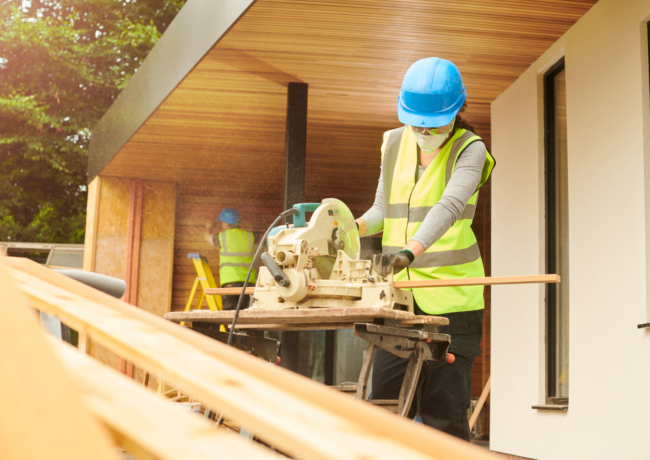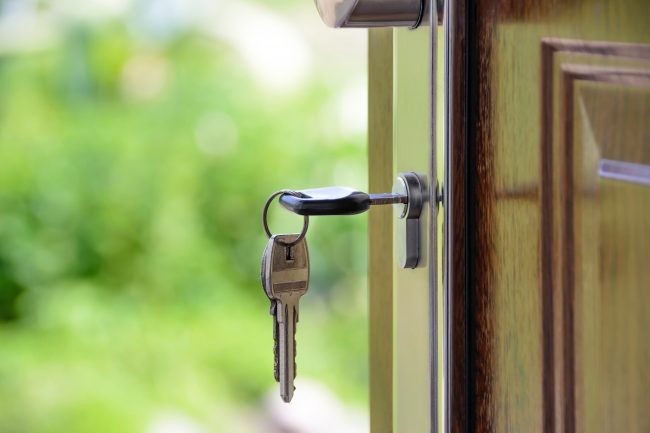In addition to being a place to store tools and equipment, the garage also acts as a refuge for your car and frequently as a doorway into your house. To operate at their best, garages need routine upkeep and sporadic repairs, just like any other aspect of your home.
Ignoring garage trouble signals might result in expensive repairs or even dangerous situations. So how can you tell when you want garage door repair services?
Signs Your Garage Door Needs Repairing
Unusual Noises
When your garage operates strangely, it’s one of the most likely symptoms that anything is wrong. If the garage door makes grinding, squeaking, or banging noises when it opens or closes, there may be a problem with the springs, tracks, or opener system.
Paying attention to these noises is important since they frequently indicate that parts are wearing out or becoming misaligned.
Problems With Opening Or Closing The Door
If you face difficulty while opening or closing the garage door, there might be potential issues such as faulty springs misaligned tracks, or even a broken garage door opener.
You might have thought to keep the door open, but we strongly advise against it, as it will result in permanent damage to the door.
Visible Damage
Look out for any indications of damage to your garage door and its parts frequently. This includes damage to the tracks, rollers, springs, or cables.
The door may be jeopardised and its functionality compromised by even minor damage. By taking quick action to resolve these problems, you may save further damage and increase the lifespan of your garage door system.
Sagging or Uneven Door
A crooked or uneven garage door is a dead giveaway that something is wrong when opening or closing. This might indicate structural problems with the door itself, or from the springs, tracks, or cables.
High Energy expenses
Your garage door could be the culprit to an abrupt spike in your energy expenses. Poor insulation or broken garage doors can let hot or cold air into your house, making your HVAC system work harder to keep the temperature maintained. Energy expenses can be reduced by replacing your garage door with a more energy-efficient model or by filling in any insulating gaps.
Safety Concerns
If garage doors are not properly maintained, they can pose significant safety risks. It’s critical to take rapid action to fix any malfunctioning signals you observe, such as the door shutting too quickly or failing to reverse when blocked. Safety must always come first since damaged or injured people may result from malfunctioning garage doors.
Should I Fix My Garage Door Myself?
While some homeowners might be inclined to attempt do-it-yourself garage door repairs to save money, it’s important to think carefully about whether this is the best course of action.
Garage door systems are intricate machinery that needs certain knowledge and abilities to fix in a way that is both safe and efficient. Without the necessary knowledge, attempting to repair a garage door can result in more harm or damage, especially given the safety dangers associated with the heavy components working under high strain. Furthermore, DIY fixes can nullify any manufacturer warranties, which might result in further expenses if problems later on.
Expert garage repair specialists are equipped with the knowledge and resources necessary to identify issues and make the right repairs the first time, guaranteeing high-quality work and preventing more issues.
Despite the first seeming cost-effectiveness of do-it-yourself repairs, the possibility of errors or insufficient remedies might lead to greater long-term costs. In addition to saving time and trouble, hiring a professional repair service offers value for your money and peace of mind.
Consequently, the safest and most dependable course of action for the majority of homeowners is to leave garage door repairs to skilled experts, who can guarantee that your garage door will be swiftly and successfully restored to its ideal state.
Repair Or Replace: How Do I Know Which One To Choose?
Choosing whether to replace or repair your garage door might be a crucial choice when it’s having problems. Several things can assist you in making an educated decision:
Damage: Determine how much of your garage door has been damaged. Small problems like broken panels or deteriorated weather stripping could be fixable, but substantial damage to important parts like tracks or springs might call for a replacement.
Age of the Door: Have you ever wondered how old your garage door is? Replacing it with a newer, more efficient model may be a better long-term investment than making regular repairs if it’s getting close to the end of its estimated lifespan or showing symptoms of substantial wear and tear.
Repair vs. Replacement Cost: Examine the differences between the price of a new garage door and the cost of repairs. The total cost of several repairs might sometimes be more than the cost of a replacement. Furthermore, contemporary garage doors frequently provide enhanced functionality and increased energy efficiency, adding value.
Functionality and Safety: Assess the safety and functionality of your existing garage door. Replacing it with a more recent, dependable model can be the best course of action if it is breaking down frequently or causing safety risks, including failing to reverse when blocked.










